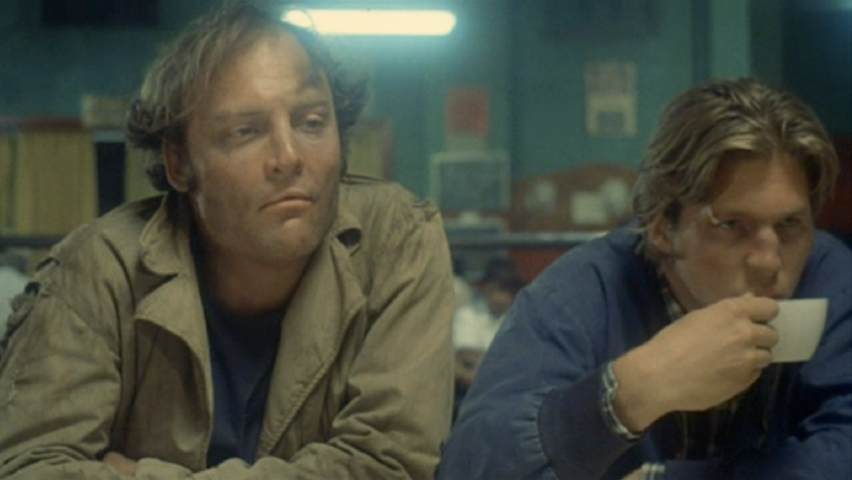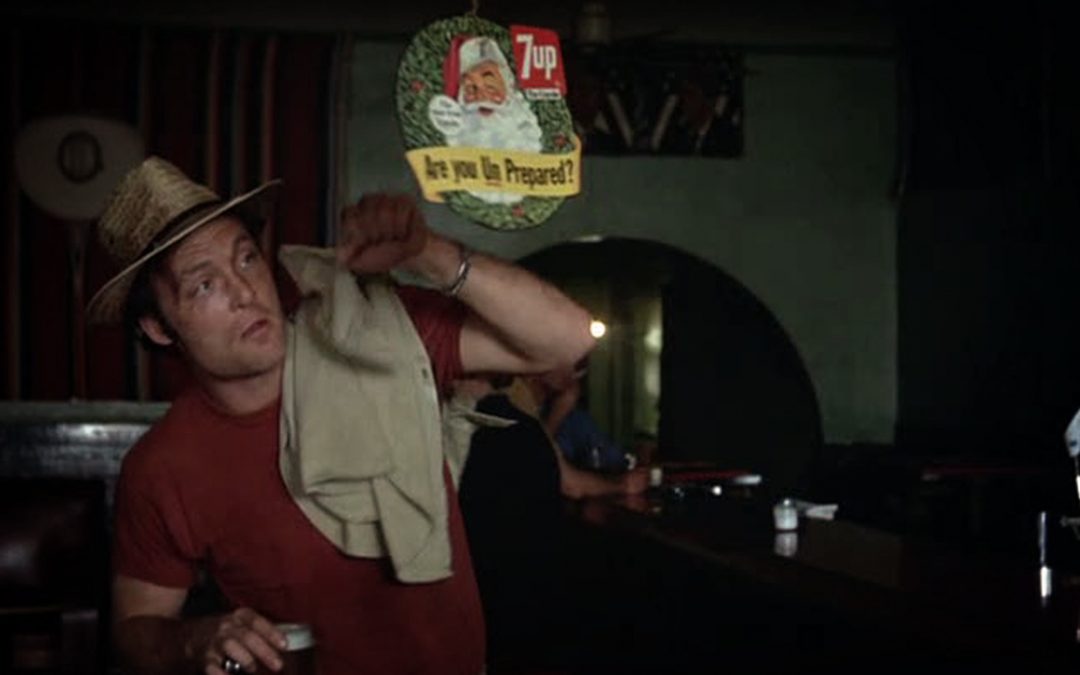“Sometimes you only get to win one championship.”—Leonard Gardner
In 1969, Leonard Gardner’s novel Fat City was published. It a story about boxing and drinking in Stockton, California, about losers losing. “I have a strong sense of mortality,” Gardner said in an interview with Life magazine:
I feel death hovering about me. It was one of the reasons I started to write. I wanted other people to know my spirit and my soul, because I knew I wasn’t going to be around much longer. I have come to see other people in the same light. Their like second-rate fighters on the way out. I wrote Fat City from several points of view. I wrote about the lives of boxers, which I did know something about, and I wrote about the life of a fight manager, which I didn’t know anything about. I created the incidents in the book by imagining what people like this would be doing with their lives.
…Boxing is a difficult subject. It is easy for it to go wrong. There’s been so many clichés connected with boxing that it is difficult for people to think of boxing without the clichés. I wanted to show boxing as it really is—not an exciting piece of entertainment but as the sport of the poorest element of our society. Two guys climb into a ring and beat each other up, while a few others pay to watch. I wanted to tell about these guys who muddle around, get beat up, perhaps drop out, and start up again, the guys who never become champions.
Gardner’s prose is lean and exact but also dense–you can almost feel how much effort went into making it direct and spare. The late George Kimball once told me that Fat City was originally 400 pages long and Gardner kept honing it, pairing it down, like a master chef making a reduction. The book is less than 200 pages and belongs in a special group of terse novels including So Long, See You Tomorrow by William Maxwell and Welcome to Hard Times by E.L. Doctorow.
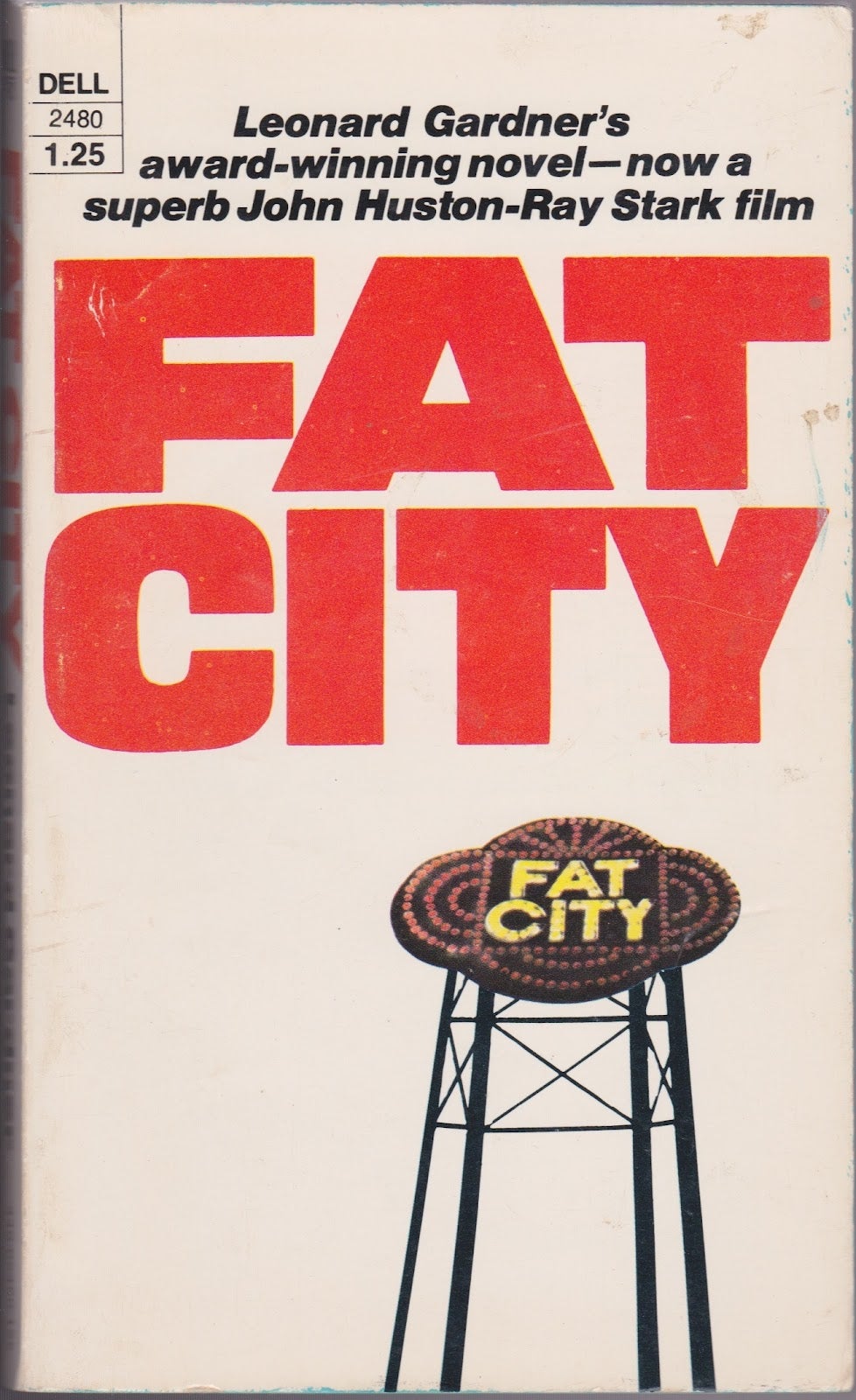
From Frank Conroy’s review in Life:
Gardner’s book should be taken slowly. The chapters are constructed with great care, worked, polished and fitted like a precision parts in a beautiful engine. There is a comic chapter on the physical attributes of boxers which could easily be overlooked, three pages as delicate and funny as the calmer Twain. Chapter Four, a short section ending a magnificent description of a boxer doing roadwork, withstands the closest scrutiny. There are weaknesses, of course. A certain archness in the dialogue when it becomes too compressed, an overremoteness to the women which makes them at times mechanical—but for the most part the book is to be relished.
Mr. Gardner has made a remarkable debut. Undoubtedly much more will be heard from him.
But then more wasn’t heard from him, at least not as far as books go. Fat City was the only novel Gardner ever published. He wrote magazine stories for Sport and later Inside Sports. David Milch taught Fat City when he was a professor at Yale and later brought Gardner to Hollywood to write TV scripts.
Kimball knew Gardner, of course, because George seemed to know everyone but he didn’t know why Gardner had never written another book. He said Gardner never offered a reason and so he didn’t pressed him for one. His guess was that Gardner wrote such a perfectly realized book in Fat City that he figured could never reach that height again (see Lee, Harper). So why bother trying?
It is the compression of Gardner’s language that makes the book so memorable and why it has a cult following. Here’s Denis Johnson writing for Salon back in 1996:
My neighbor across the road, also a young literary hopeful, felt the same. We talked about every paragraph of “Fat City” one by one and over and over, the way couples sometimes reminisce about each moment of their falling in love.
And like most youngsters in the throes, I assumed I was among the very few humans who’d ever felt this way. In the next few years, studying at the Writer’s Workshop in Iowa City, I was astonished every time I met a young writer who could quote esctatically line after line of dialogue from the down-and-out souls of “Fat City,” the men and women seeking love, a bit of comfort, even glory — but never forgiveness — in the heat and dust of central California. Admirers were everywhere.
My friend across the road saw Gardner in a drugstore in California once, recognized him from his jacket photo. He was looking at a boxing magazine. “Are you Leonard Gardner?” my friend asked. “You must be a writer,” Gardner said, and went back to the magazine. I made him tell the story a thousand times.
And John Schulian:
He gave our sergeant major’s teen-aged daughter the clap. Some weeks afterward, as if to illustrate the breadth of his interests, he told me about a novel no literate man could live without reading, a novel about boxing’s small-time losers called Fat City. This was the Army in 1969: just as boggled and maddening as everything else about a country rent by forces it couldn’t comprehend. And the soldier who led me to Fat City has come to represent it in my memories. I can’t recall his name, but I do remember his off-kilter smile and his mean, crazy eyes. That, and what wonderful taste he had in books.
…Every time I reread Fat City, I wonder if Leonard Gardner lived the life. In 183 pages without an ounce of fat on them, he told a story as real as the smell of sweat, a story made that much more pungent by pitch-perfect dialogue. But what Gardner captured best was the sense of desolation consuming Billy: “No one was worth the gift of his life, no one could possibly be worth that. It belonged to him alone and he did not deserve it either, because he was letting it waste. It was getting away from him and he made no effort to stop it. He did not know how.”
John Huston made a movie of Fat City in 1972 and it matches the beauty of its source.
From George Kimball:
Besides maintaining his allegiance to Gardner’s work in refusing to “go Hollywood” with the film, another Huston stamp on the movie came when he insisted, against the producer’s wishes, on retaining cinematographer Conrad Hall’s noir recreation of the interior skid-row barroom scenes. Stark felt the dark scenes would render the film unsuitable for drive-ins (not an insignificant consideration in 1972), wanted to fire Hall and re-shoot the scenes. Huston told the producer, in effect, “if he goes, I go.” If it was a bluff, it worked.
Now imagine Fat City with Marlon Brando with all that scar tissue above his eyes instead of Stacy Keach. Huston initially wanted Brando to play Tully, but interpreted his vacillation as a lack of interest, and when Brando wound up taking the eponymous role in The Godfather, the director turned to the relatively unknown Keach.
Would Margot Kidder have delivered an Academy Award-nominated performance had she and not Susan Tyrell (who did earn a nomination) been cast as Oma, the philosophical barfly who takes up with Tully?
And one thing we know for sure. Had someone other than Huston been the director, we don’t know who would have played Earl, Tully’s rival for Oma’s affections, but we can tell you with absolute certainty that it wouldn’t have been Curtis Cokes.
Huston had been living in Ireland since 1964, and once he took on the project he invited Gardner to his estate in Galway. It was a pretty heady experience for the young writer.
“I’d already written a first draft of the screenplay, and what we did over there was go through it bit by bit,” recalled Gardner. “Huston spent most of his time painting, so he only wanted to address one scene per day. Sometimes I could rewrite a scene overnight, sometimes I couldn’t, but we’d move on to the next one.”
Huston had boxed himself in his youth. His first published short story had a boxing tale called “Fool,” which H.L. Mencken published in his American Mercury in 1929. Though authenticity was important, Huston didn’t define Fat City as a boxing movie at all.
“It’s about life running down the sink without being able to pull the plug to stop it,” was the director’s description.
“But his boxing background was reassuring to me,” recalled Gardner. “He knew the sport and he understood it. Particularly back then every time Hollywood got near boxing they seemed to turn to the same schlock clichés, but there was no danger of that with him.
“And just as he was an ‘actors’ director’ because he gave his cast an extraordinarily free hand in interpreting scenes, I guess you could say he was a ‘writer’s director,’ too. He knew what was good about the book and didn’t want to screw it up by changing a lot of things.
“And I’d like to think that I have a pretty good cinematic sense myself,” added Gardner, who would later enjoy success writing for film and television (in a five-year run at NYPD Blue). “I could visualize the way certain things would work on the screen, and he retained most of that — though I’m not so vain that I’d have argued for keeping something Huston didn’t think would work once he’d explained it.”
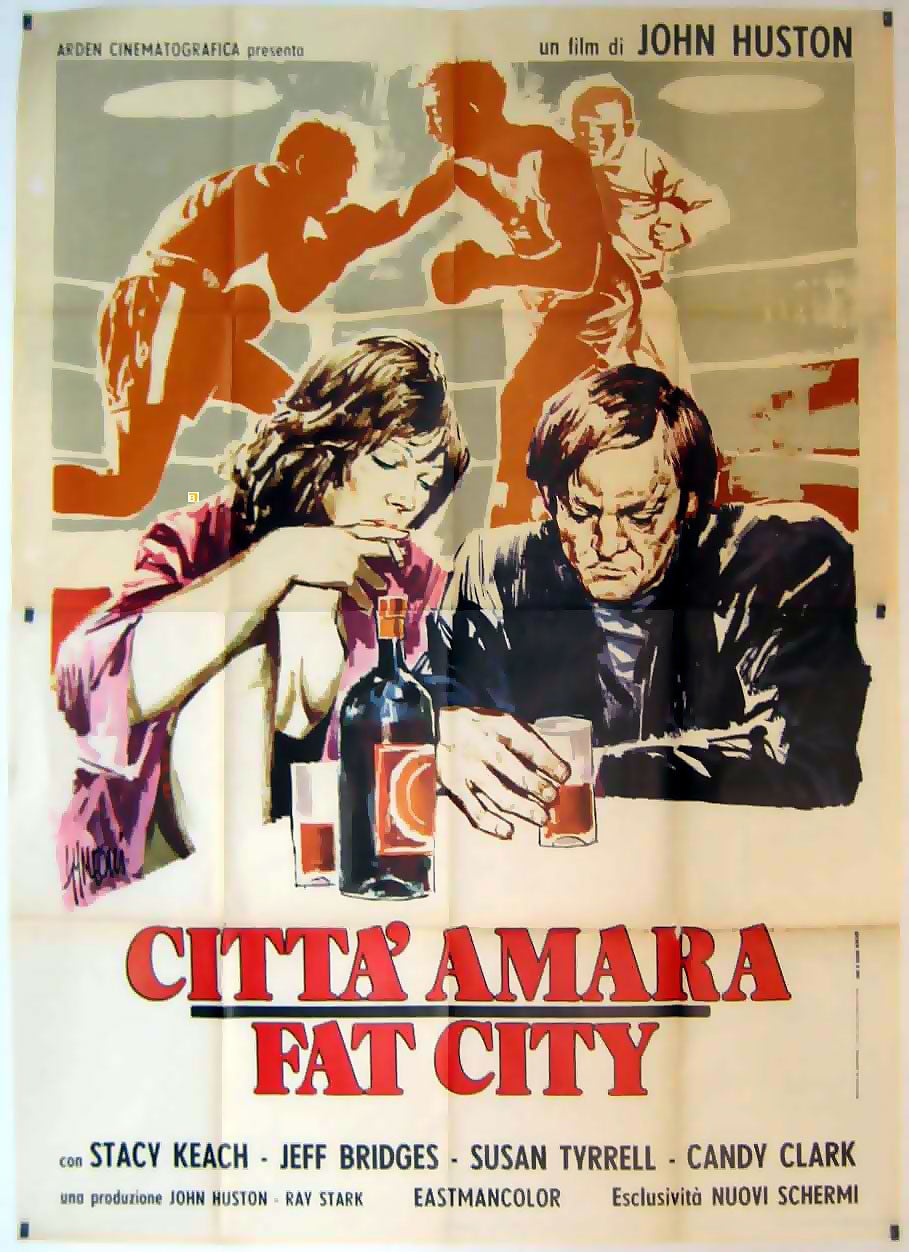
And from John Huston’s autobiography An Open Book:
I had done bits of films in the United States, but it was a long time since I’d made an entire picture there. Ray Stark was responsible for my reappearance on the American scene with Fat City, a novel by Leonard Gardner. “Fat City is a term jazz musicians used to designate success with a capital “S.” It’s about people who are beaten before they start but who never stop dreaming. Its main characters are two fights: one aging, slightly paunchy, who’s had his moment of glory in the ring who whose next stop is Skid Row, and his younger counterpart who’s headed in the same direction despite the living lesson before his eyes.
We had hope to have Marlon Brando play the part of the older fighter. Ray and I ment him in London. He had read the script and liked it, but refused to be pinned down, saying that he would call us by the end of the week. The time passed, we heard nothing. I despair at chasing actors, so we started looking elsewhere. (Some time later I heard Marlon had injured feelings at having been “passed over.”) The man we found was another actor whose star was rising–Stacy Keach. I had never met him, but when I found that he was making a picture in Spain, I went over and paid him a visit. There was a quality there. I also saw him in a beautiful, sadly neglected little film called The Traveling Executioner. His performance was exceptional, and I knew I was lucky to have him in Fat City.
Most of the other actors–apart from Jeff Bridges, who had a few pictures to his credit, and Susan Tyrell, who’d done some theater–were non-professional. som of the cast came right out of my own past–fighters I’d known in my youth. Others turned up in Stockton itself. I remember particularly one black man we pulled out of the onion fields to try for a part. In the film he was to walk side by side with Stacy, hoeing weeds in a tomato field and telling a long story about the break-up of his marriage. This old fellow came to my apartment and read for me, his eyes glued to the pages of the script. He read as though the words were his very own. I asked him whether he tought he could learn the part.
“I already have,” he said.
“What do you mean?”
“I can’t read. I was just pretending.” Someone had read the part to him a few times, and he had memorized it.
Then there was an arrogant sixteen-year-old black kid from the local high school. When Muhammad Ali saw him on the screen during a special showing I had for him, he stood up and shouted, “Stop the picture! That’s me up there! Listen to that…that’s me! you hear?” The kid was that good.
We shot most of the picture of Stockton’s Skid Row. It’s now a thing of the past; they’ve wiped it out. I wonder where all the poor devils who inhabited have gone. They have to be somewhere. There were crummy little hotels; gaps between buildings like missing teeth; people–blacks and whites–standing around or sitting on orange crates; little gambling halls where they played for nickels and dimes. Many of the signs were in Chinese because the area had a large Chinese population. The police were very gentle with the derelicts. As long as they stayed within the sharply defined boundaries of the neighborhood, they could sleep in doorways, win bottle in hand; if they wandered out, the police simply shooed them back. They were completely harmless, defeated men.
Fat City had a great reception when it was first shown, at Cannes in 1972. After the screening I walked into an adjoining hall to meet the press, and they gave me a standing ovation. When that happened, i was sure it was going to be a success. But no. Wherever it was shown, it was beautifully reviewed, but audiences didn’t care for it. It’s a fine picture, no question–well conceived, well acted, made with deep love and considerable understanding on the part of everyone involved. I suppose the public simply found it too sad. It has at least one devoted fan: Ray Stark considers it the best picture he has ever produced.
It’s easy to see why Huston was attracted to the story. He had a great affection for its characters and setting. But while he captured the unhappiness of Gardner’s story I think the movie has more humor than the book.
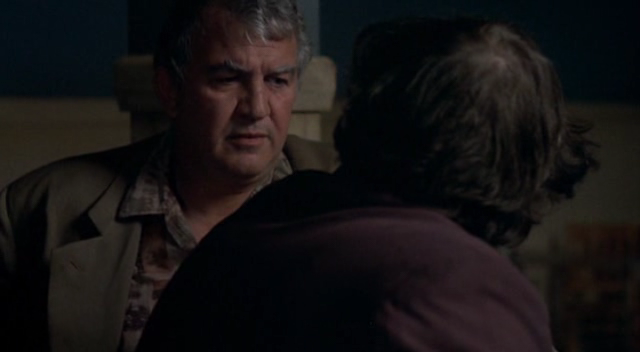
There was some amusing exchanges in the novel but they didn’t make me laugh. The moment we see Nicholas Colasanto in the movie, however, the sound of his voice cuts through the despair.
Huston’s directorial style is also an ideal fit for Gardner’s prose. I remember once reading an article about Huston in American Film when he was making his final film, The Dead. His son Tony was surprised at how skilled his father’s camera technique was. And the old man said, “It’s what I do best, yet no critic has ever remarked on it. That’s exactly as it should be. If they noticed it, it wouldn’t be any good.”
In Huston’s movies—The Maltese Falcon, The Treasure of the Sierra Madre, Prizzi’s Honor—you don’t notice the style; you follow the story. Gardner, who wrote the screenplay with Huston, was blessed to have this man in his corner. The boxing scenes are strong. You feel close to the action, but nothing is forced or stylistic–it’s not like the Rocky movies or Raging Bull. In fact, you can see the ropes in the frame often, putting us just outside of the ring. The boxers sometimes look clunky but since they aren’t supposed to be great fighters, it works. And in Keach’s big fight scene you can feel the fighters’ exhaustion, their bodies getting heavy by the second round.
There is a lot of drinking during the day and the blinding light that greets you once you stumble out of a bar into the daylight is a telling detail. It is that kind of touch that makes Huston’s movie true. Nothing much happens in the story. But it feels authentic, taking the essence of Gardner’s wonderful, harsh book and making it into a story for the screen.
